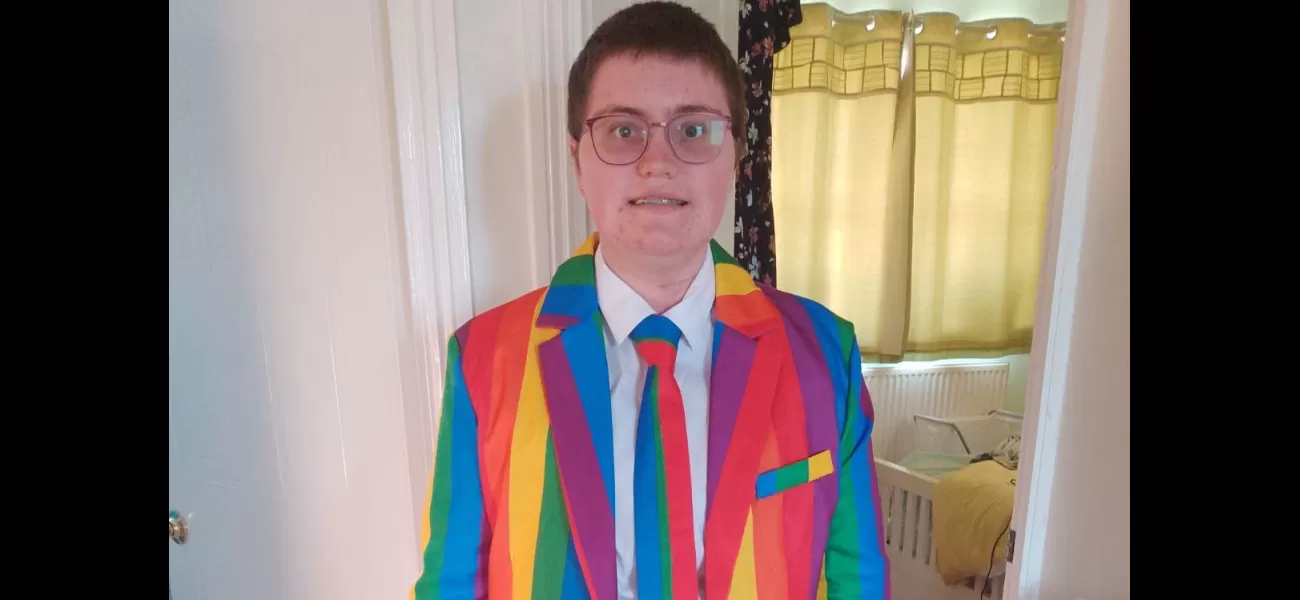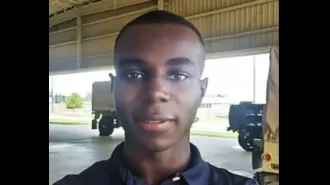A transgender teenager avoided drinking water at school to avoid using the restroom.
The bathroom was my least comfortable place.
March 19th 2024.

At the age of 14, I made a decision that would change my daily routine at school. I stopped drinking water. It may seem like a small thing, but for me, it was a big deal. You see, I always had a dry mouth and would sometimes feel lightheaded, especially during the hot summer months. On top of that, I absolutely despised the changing rooms used for P.E. I felt uncomfortable and anxious in that environment. So, in an attempt to avoid the discomfort, I would wear as much of my P.E. kit as possible under my regular clothes. As you can imagine, this only made me sweat more and become even more dehydrated.
My aversion to water and P.E. had a deeper root cause that I wasn't even aware of at the time. You see, I hadn't fully realized it yet, but I was transgender. So, without even realizing it, I was doing everything I could to avoid using the female bathrooms. It wasn't until I was 15 that I had my "lightbulb moment" about my gender identity. I was watching a documentary on TV about a young transgender man reflecting on his life and experiences. It was like a switch flipped in my brain, and suddenly, everything made sense.
After seeing the documentary, I was confused and upset for a while, unable to pinpoint the reason why. Eventually, I started talking about it with my counselor, who was already helping me with my anxiety and other mental health struggles. It never occurred to me to question my gender identity before, but with the help of my counselor, I began to understand that it wasn't as simple as I had always believed. I wasn't just avoiding water and bathrooms and P.E. because I disliked them for no reason – it was because I was trying to avoid being in a space where I didn't feel comfortable as a transgender person.
I wanted to kick myself for not realizing it sooner, that I am not – and never was – a girl. With my counselor's support, I decided to come out to my mom, and she was understanding and supportive. A week or two later, I came out to my dad as well, and although it took some time for them to adjust, we worked through it together.
At school, I asked the staff to use my chosen name and preferred pronouns – both 'he' and 'him' or 'they' and 'them.' Thankfully, the teaching assistants I worked with were very accepting. However, not all of my teachers were as receptive. I would often be called by my old name and referred to with the wrong pronouns, which was frustrating for me. It also confused my classmates, as they would hear two different names being used for me. I constantly had to remind people of my new name and pronouns, but even then, at the end of the year, my results certificates were still in my old name.
Throughout my social transition, the biggest challenge I faced was using the bathrooms at school. I wanted to use the men's bathrooms, as it felt like the more comfortable option, but I was scared. Instead, I used the women's bathrooms, and unfortunately, my worst fears came true. I received hurtful comments about my appearance and clothing, was laughed at and ridiculed, and even physically pushed around by my peers. It was a traumatic experience, and I didn't report it because I was afraid it would make things worse.
To this day, I still refuse to use gendered bathrooms in public places. Eventually, I decided to leave my school and attend a college in a different town, where I finally felt safer and more accepted. It was refreshing to have a fresh start where most people didn't know about my previous name or gender. And for the first time, I had two other trans people in my class, which was like a miracle to me.
The teachers at my college were also very supportive and understanding, and it really helped boost my confidence. Looking back now, at the age of 21, I realize that a lot of my struggles during my social transition were due to a lack of understanding and support from the adults and peers around me. There was no mention of gender diversity in the curriculum, and there were no policies in place to address issues such as ignorance, bullying, or harassment towards transgender students.
And now, with the recent release of draft guidance for schools on gender diverse young people by the Government, which talks about us as if we're a problem, I worry for the well-being of transgender youth in schools. The guidance specifically states that schools are not obligated to support a child's social transition, such as changing their name or pronouns. If teachers follow this guidance, I fear it would be catastrophic for trans students who are already struggling. I can't even imagine how I would have coped if I were still in school.
My mental health, which was already not great, would have suffered even more. I doubt I would have been able to sit my exams or continue my education. It's concerning that decisions like this are made without considering the opinions and experiences of people like me, and it's clear that more needs to be done to support transgender youth in schools.
I firmly believe that trans young people should be allowed to be themselves at school and should be supported for it. I'm hopeful that in the future, all trans youth will feel accepted and supported in educational settings, as it is their right. As for me, I am now an ambassador for Just Like Us, a charity for LGBT+ young people, and I hope to use my experiences to help others like me.
My aversion to water and P.E. had a deeper root cause that I wasn't even aware of at the time. You see, I hadn't fully realized it yet, but I was transgender. So, without even realizing it, I was doing everything I could to avoid using the female bathrooms. It wasn't until I was 15 that I had my "lightbulb moment" about my gender identity. I was watching a documentary on TV about a young transgender man reflecting on his life and experiences. It was like a switch flipped in my brain, and suddenly, everything made sense.
After seeing the documentary, I was confused and upset for a while, unable to pinpoint the reason why. Eventually, I started talking about it with my counselor, who was already helping me with my anxiety and other mental health struggles. It never occurred to me to question my gender identity before, but with the help of my counselor, I began to understand that it wasn't as simple as I had always believed. I wasn't just avoiding water and bathrooms and P.E. because I disliked them for no reason – it was because I was trying to avoid being in a space where I didn't feel comfortable as a transgender person.
I wanted to kick myself for not realizing it sooner, that I am not – and never was – a girl. With my counselor's support, I decided to come out to my mom, and she was understanding and supportive. A week or two later, I came out to my dad as well, and although it took some time for them to adjust, we worked through it together.
At school, I asked the staff to use my chosen name and preferred pronouns – both 'he' and 'him' or 'they' and 'them.' Thankfully, the teaching assistants I worked with were very accepting. However, not all of my teachers were as receptive. I would often be called by my old name and referred to with the wrong pronouns, which was frustrating for me. It also confused my classmates, as they would hear two different names being used for me. I constantly had to remind people of my new name and pronouns, but even then, at the end of the year, my results certificates were still in my old name.
Throughout my social transition, the biggest challenge I faced was using the bathrooms at school. I wanted to use the men's bathrooms, as it felt like the more comfortable option, but I was scared. Instead, I used the women's bathrooms, and unfortunately, my worst fears came true. I received hurtful comments about my appearance and clothing, was laughed at and ridiculed, and even physically pushed around by my peers. It was a traumatic experience, and I didn't report it because I was afraid it would make things worse.
To this day, I still refuse to use gendered bathrooms in public places. Eventually, I decided to leave my school and attend a college in a different town, where I finally felt safer and more accepted. It was refreshing to have a fresh start where most people didn't know about my previous name or gender. And for the first time, I had two other trans people in my class, which was like a miracle to me.
The teachers at my college were also very supportive and understanding, and it really helped boost my confidence. Looking back now, at the age of 21, I realize that a lot of my struggles during my social transition were due to a lack of understanding and support from the adults and peers around me. There was no mention of gender diversity in the curriculum, and there were no policies in place to address issues such as ignorance, bullying, or harassment towards transgender students.
And now, with the recent release of draft guidance for schools on gender diverse young people by the Government, which talks about us as if we're a problem, I worry for the well-being of transgender youth in schools. The guidance specifically states that schools are not obligated to support a child's social transition, such as changing their name or pronouns. If teachers follow this guidance, I fear it would be catastrophic for trans students who are already struggling. I can't even imagine how I would have coped if I were still in school.
My mental health, which was already not great, would have suffered even more. I doubt I would have been able to sit my exams or continue my education. It's concerning that decisions like this are made without considering the opinions and experiences of people like me, and it's clear that more needs to be done to support transgender youth in schools.
I firmly believe that trans young people should be allowed to be themselves at school and should be supported for it. I'm hopeful that in the future, all trans youth will feel accepted and supported in educational settings, as it is their right. As for me, I am now an ambassador for Just Like Us, a charity for LGBT+ young people, and I hope to use my experiences to help others like me.
[This article has been trending online recently and has been generated with AI. Your feed is customized.]
[Generative AI is experimental.]
0
0
Submit Comment





